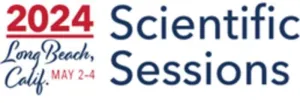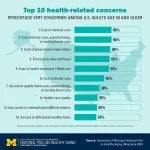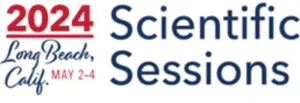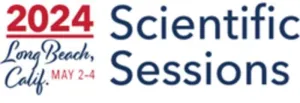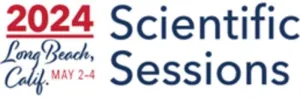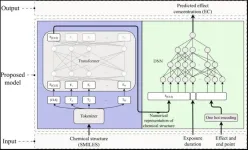(Press-News.org) Recent reports of NASA’s James Webb Space Telescope finding signs of life on a distant planet understandably sparked excitement. A new study challenges this finding, but also outlines how the telescope might verify the presence of the life-produced gas.
The UC Riverside study, published in the Astrophysical Journal Letters, may be a disappointment to extraterrestrial enthusiasts but does not rule out the near-future possibility of discovery.
In 2023 there were tantalizing reports of a biosignature gas in the atmosphere of planet K2-18b, which seemed to have several conditions that would make life possible.
Many exoplanets, meaning planets orbiting other stars, are not easily comparable to Earth. Their temperatures, atmospheres, and climates make it hard to imagine Earth-type life on them.
However, K2-18b is a bit different. “This planet gets almost the same amount of solar radiation as Earth. And if atmosphere is removed as a factor, K2-18b has a temperature close to Earth’s, which is also an ideal situation in which to find life,” said UCR project scientist and paper author Shang-Min Tsai.
K2-18b’s atmosphere is mainly hydrogen, unlike our nitrogen-based atmosphere. But there was speculation that K2-18b has water oceans, like Earth. That makes K2-18b a potentially “Hycean” world, which means a combination of a hydrogen atmosphere and water oceans.
Last year, a Cambridge team revealed methane and carbon dioxide in the atmosphere of K2-18b using JWST – other elements that could point to signs of life.
“What was icing on the cake, in terms of the search for life, is that last year these researchers reported a tentative detection of dimethyl sulfide, or DMS, in the atmosphere of that planet, which is produced by ocean phytoplankton on Earth,” Tsai said. DMS is the main source of airborne sulfur on our planet and may play a role in cloud formation.
Because the telescope data were inconclusive, the UCR researchers wanted to understand whether enough DMS could accumulate to detectable levels on K2-18b, which is about 120 light years away from Earth. As with any planet that far away, obtaining physical samples of atmospheric chemicals is impossible.
“The DMS signal from the Webb telescope was not very strong and only showed up in certain ways when analyzing the data,” Tsai said. “We wanted to know if we could be sure of what seemed like a hint about DMS.”
Based on computer models that account for the physics and chemistry of DMS, as well as the hydrogen-based atmosphere, the researchers found that it is unlikely the data show the presence of DMS. “The signal strongly overlaps with methane, and we think that picking out DMS from methane is beyond this instrument’s capability,” Tsai said.
However, the researchers believe it is possible for DMS to accumulate to detectable levels. For that to happen, plankton or some other life form would have to produce 20 times more DMS than is present on Earth.
Detecting life on exoplanets is a daunting task, given their distance from Earth. To find DMS, the Webb telescope would need to use an instrument better able to detect infrared wavelengths in the atmosphere than the one used last year. Fortunately, the telescope will use such an instrument later this year, revealing definitively whether DMS exists on K2-18b.
"The best biosignatures on an exoplanet may differ significantly from those we find most abundant on Earth today. On a planet with a hydrogen-rich atmosphere, we may be more likely to find DMS made by life instead of oxygen made by plants and bacteria as on Earth,” said UCR astrobiologist Eddie Schwieterman, a senior author of the study.
Given the complexities of searching far-flung planets for signs of life, some wonder about the researchers continued motivations.
“Why do we keep exploring the cosmos for signs of life? Imagine you’re camping in Joshua Tree at night, and you hear something. Your instinct is to shine a light to see what’s out there. That’s what we’re doing too, in a way,” Tsai said.
END
Webb telescope probably didn’t find life on an exoplanet — yet
Claims of biosignature gas detection were premature
2024-05-02
ELSE PRESS RELEASES FROM THIS DATE:
Radial arterial access found superior to femoral access in percutaneous coronary intervention
2024-05-02
Long Beach, Calif. – May 2, 2024 – New data demonstrate the superiority of radial arterial access compared to femoral arterial access for coronary interventions. Findings showed radial access was associated with lower rates of in-hospital mortality, major access bleeding, and other major vascular complications compared with femoral access. The late-breaking results were presented today at the Society for Cardiovascular Angiography & Interventions (SCAI) 2024 Scientific Sessions.
Historically, femoral arterial access, through the groin, for percutaneous coronary intervention (PCI) was the standard. Radial access, or ...
Money on their minds: Health-related costs top older adults’ concerns for people their age, poll finds
2024-05-02
From medical and dental care to medications, insurance and nursing homes, health-related costs weigh heavily on the minds of older Americans of all backgrounds, a new poll suggests.
Asked to rate their level of concern about 26 different health-related topics for people over 50 in their community, five of the six issues that the most people cited as very concerning involved health costs.
The sixth – financial scams and fraud – also had to do with money.
Those same six topics rose to the top no matter what ...
To bend the curve of biodiversity loss, nature recovery must be integrated across all sectors
2024-05-02
The alarming rates of biodiversity loss worldwide have made clear that the classical way of governing biodiversity recovery based on protected areas and programmes for the protection of endangered species is not enough. To tackle this, almost 200 countries committed to the active ‘mainstreaming’ or integration of biodiversity targets into policies and plans across relevant sectors. However, research led by Utrecht University and UFZ Helmholz Centre for Environmental Research suggests that this has until now been largely ineffective due to non-binding commitments, ...
Singapore study identifies immunity threshold for protection against COVID-19 in children
2024-05-02
As COVID-19 becomes endemic, an important group of people who continue to require vaccination is future birth cohorts of children. Yet, in the face of ever-changing variants, as well as the waning of antibodies with time after each dose, key questions remain: What is the threshold of immune response against SARS-CoV-2 needed to protect against COVID-19 and how many doses of mRNA vaccination are required to reach that threshold?
Researchers answered this question in a joint study conducted by the NUS Yong Loo Lin School of Medicine (NUS Medicine) and Duke-NUS Medical School. With parental consent ...
National incidence of heart attacks decline 50% since 2004, yet underrepresented groups remain at highest risk
2024-05-02
People with Lower Income and Pre-Existing Conditions at Greater Risk of STEMI in the United States
Women, Black, and Hispanic Patients Up to 25% Less Likely to Receive Treatment for Heart Attacks Compared Men and White Patients
Long Beach, Calif. – May 3, 2024 – New data focusing on heart attack, specifically ST‐segment–elevation myocardial infarction (STEMI), uncovered socio-economic, racial, and gendered disparities associated with greater risk and are less likely to receive certain procedures. The data were presented today at the Society for Cardiovascular Angiography & Interventions (SCAI) 2024 Scientific Sessions.
STEMI, caused by ...
TAVR is associated with lower in-hospital complications in patients with aortic stenosis and cardiogenic shock compared to SAVR
2024-05-02
Long Beach, Calif. – May 4, 2024 – A nationwide observational analysis of patients with aortic stenosis (AS) and cardiogenic shock (CS) who underwent transcatheter aortic valve replacement (TAVR) or surgical aortic valve replacement (SAVR) determined that patients who underwent TAVR had lower in-hospital complications and resource utilization compared with SAVR. The results were presented today at the Society for Cardiovascular Angiography & Interventions (SCAI) 2024 Scientific Sessions.
As many as 300,000 people in the United States are diagnosed with AS every year. It predominantly affects those ...
New studies reveal underrepresentation of women and Hispanic population in the treatment of peripheral artery disease
2024-05-02
Hispanic Population Largely Remains Underrepresented in Studies of Treatment Devices for PAD Despite Being Dominant Minority Population Affected by PAD
Studies Evaluating Usage of Drug-Coated Balloon for PAD Include Disproportionate Amount of Women by One-Third Compared to Men
Analysis Shows 51% of PAD Cases Involve Women Despite Experiencing Less Severe Outcomes
Long Beach, Calif. – May 4, 2024 – New study findings underscore gaps in clinical trial representation of women and Hispanics for peripheral artery disease (PAD) and chronic limb-threatening ...
Empire Discovery Institute receives commercial funding award from the National Multiple Sclerosis Society
2024-05-02
ROCHESTER, NY, May 2, 2024 – Empire Discovery Institute (EDI) has entered into a collaborative research partnership with the National Multiple Sclerosis Society and its commercial development program Fast Forward, LLC. Through a competitive application and review process, EDI was awarded $791,933 from Fast Forward along with technical support from its network of key opinion leaders in multiple sclerosis (MS) who will help contribute to the advancement of EDI’s technology.
Fast Forward provides research funding to commercial entities who develop promising new therapies for the treatment of MS, a demyelinating disease of the central nervous system impacting ...
Nicola Fuchs-Schündeln to become the new President of the WZB Berlin Social Science Center
2024-05-02
The shareholders' meeting of the WZB has appointed Nicola Fuchs-Schündeln as the institute's future president. She succeeds Jutta Allmendinger, who has headed the institute since 2007. Nicola Fuchs-Schündeln is Professor of Macroeconomics and Development at Goethe University Frankfurt. The handover of office will take place on September 4, 2024 at the WZB.
Nicola Fuchs-Schündeln is a nationally and internationally renowned scientist who returned to Germany in 2009 after several years at Yale and Harvard. Since then, ...
Toxic chemicals can be detected with new AI method
2024-05-02
Swedish researchers at Chalmers University of Technology and the University of Gothenburg have developed an AI method that improves the identification of toxic chemicals – based solely on knowledge of the molecular structure. The method can contribute to better control and understanding of the ever-growing number of chemicals used in society, and can also help reduce the amount of animal tests.
The use of chemicals in society is extensive, and they occur in everything from household products to industrial processes. Many chemicals reach our waterways and ecosystems, where they may cause negative effects on humans and other ...
LAST 30 PRESS RELEASES:
Study: Teens use cellphones for an hour a day at school
After more than two years of war, Palestinian children are hungry, denied education and “like the living dead”
The untold story of life with Prader-Willi syndrome - according to the siblings who live it
How the parasite that ‘gave up sex’ found more hosts – and why its victory won’t last
When is it time to jump? The boiling frog problem of AI use in physics education
Twitter data reveals partisan divide in understanding why pollen season's getting worse
AI is quick but risky for updating old software
Revolutionizing biosecurity: new multi-omics framework to transform invasive species management
From ancient herb to modern medicine: new review unveils the multi-targeted healing potential of Borago officinalis
Building a global scientific community: Biological Diversity Journal announces dual recruitment of Editorial Board and Youth Editorial Board members
Microbes that break down antibiotics help protect ecosystems under drug pollution
Smart biochar that remembers pollutants offers a new way to clean water and recycle biomass
Rice genes matter more than domestication in shaping plant microbiomes
Ticking time bomb: Some farmers report as many as 70 tick encounters over a 6-month period
Turning garden and crop waste into plastics
Scientists discover ‘platypus galaxies’ in the early universe
Seeing thyroid cancer in a new light: when AI meets label-free imaging in the operating room
Neutrophil-to-lymphocyte ratio may aid risk stratification in depressive disorder
2026 Seismological Society of America Annual Meeting
AI-powered ECG analysis offers promising path for early detection of chronic obstructive pulmonary disease, says Mount Sinai researchers
GIMM uncovers flaws in lab-grown heart cells and paves the way for improved treatments
Cracking the evolutionary code of sleep
Medications could help the aging brain cope with surgery, memory impairment
Back pain linked to worse sleep years later in men over 65, according to study
CDC urges ‘shared decision-making’ on some childhood vaccines; many unclear about what that means
New research finds that an ‘equal treatment’ approach to economic opportunity advertising can backfire
Researchers create shape-shifting, self-navigating microparticles
Science army mobilizes to map US soil microbiome
Researchers develop new tools to turn grain crops into biosensors
Do supervised consumption sites bring increased crime? Study suggests that’s a myth
[Press-News.org] Webb telescope probably didn’t find life on an exoplanet — yetClaims of biosignature gas detection were premature

